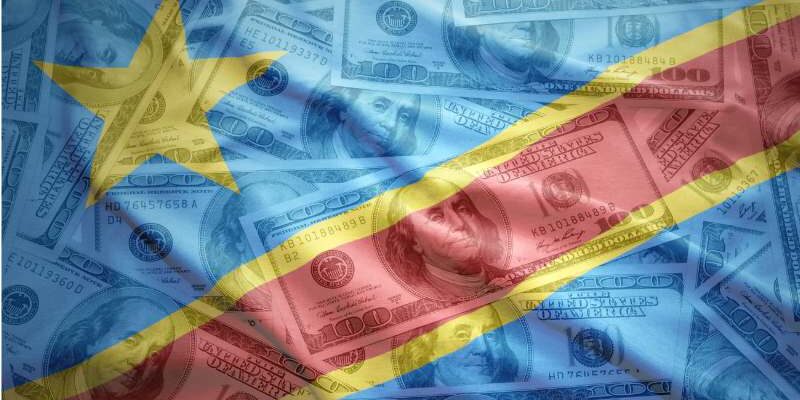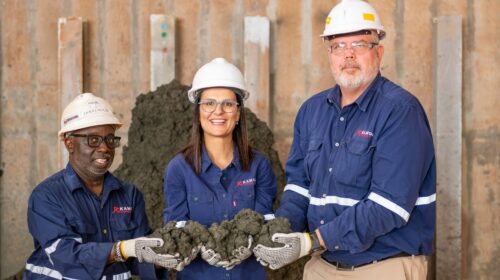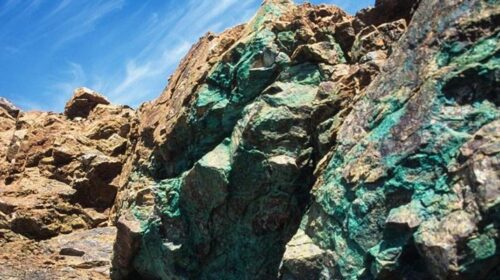Congo clears Barrick’s repatriation of $500m
The Democratic Republic of the Congo (DRC) has approved the payment of approximately US $ 500 million in joint venture cash to Barrick Gold and its partner AngloGold Ashanti, sourced from the Central African country’s Kibali gold mine.
“It’s just the paperwork,” said Mark Bristow, CEO of Barrick Gold, during Question Time following the company’s second quarter presentation and interim results, in which the Canadian-based company announced a 14% dividend increase.
According to an agreement with the Democratic Republic of the Congo, 60% of the revenues from the Kibali mine must be returned to the central African country for economic development purposes, internal dividends and payment to creditors. The balance of the proceeds will be deposited into an offshore joint venture account to pay creditors and meet other obligations.
However, the joint venture partners are allowed to withdraw excess revenue from the Democratic Republic of the Congo. However, this requires the approval of the authorities of the Democratic Republic of the Congo. Because this approval has been slow, the funds have increased over time and were valued at $ 500 million as of the end of the last quarter.
“The talks with the government are going very well. We have the central bank approval to repay the money. We’re also working with Parliament to clean up the legislation, ”Bristow said today. “There’s no question that it [the money] is owned by Barrick and, of course, AngloGold.”
In commenting on the group’s numbers, Bristow said projected production of at least 500,000 ounces per year for 10 years would come from the company’s revitalized Tanzania mines – Bulyanhulu and North Mara – at production costs that put them in the Canadian group’s category would classify a mine.
Bristow added that relations with the Tanzanian government were restored after the “destruction” by the former owner of the mines, Acacia Resources.
Tanzania President John Magafuli stopped exports of gold in concentrate from Acacia after allegations the former UK-listed group had not paid taxes for 20 years. After the merger of Randgold Resources and Barrick – the latter own around 64% of Acacia – the mines were combined in the merged group.
“The groundwork for delivery has been laid, and I can see North Mara and Bulyanhulu rank together in an annual tier 1 complex
production in excess of 500,000 ounces at a cost in the lower half of the industry curve, well beyond 10 years,” said Bristow.
The resumption of mining at Bulyanhulu is expected by year-end after work on the structural integrity of the metallurgical plant had been completed. The refurbishment of the main shaft is scheduled to start this month.
DIVIDEND LIFT
Barrick said it would pay a second quarter dividend of $0.08 per share – more than double the dividend announced at the time of the merger in 2018.
This was on the back of steady gold production for the six months to end-June of 2.4 million oz, at the mid-point of Barrick’s 4.6 million to 5 million oz annual guidance, as well as a higher gold price of $1,725/oz compared to $1,589/oz in the first quarter and $1,317/oz in the first quarter of the 2019 financial year.
Operating cash flow exceeded $1bn for the quarter and free cash flow was $522m, said Barrick. Net earnings per share was 20 cents. Adjusted net earnings per share was 23 cents, up 44% from the first quarter. Net debt net was reduced by almost 25% to $1.4bn from the end of the first quarter.
GOLD PRICE
Bristow said that the increase in the dollar price of gold could allow the company to extend the life of the Tongon mine in Ivory Coast. “We are considering a plan to trade a lower gold production for a longer life of mine,” he said.
The outcome would be to extend Tongon’s life to 2024 from 2022 at production of 180,000 oz per year. There was potential to extend the mine yet further although Bristow added the company continued to plan on a gold price of $1,200/oz. Gold is currently trading at around $2029/oz after breaching $2,000/oz last week.
In respect of merger and acquisition activity, Bristow said the company remained interested in potential deals, but “… we won’t do it on the back of a bigger gold price. We ignore the revenue side of our business when it comes to M&A”.
There would be more non-core asset sales. Having sold Barrick’s share in Kalgoorlie mine in Australia and Massawa, a mine in Senegal, there were “… smaller assets that look very attractive at the current gold price. You can look forward to more deals,” he said.
Barrick had already met its $1.5bn disposal target it had set out following the merger with Randgold Resources in 2018.





